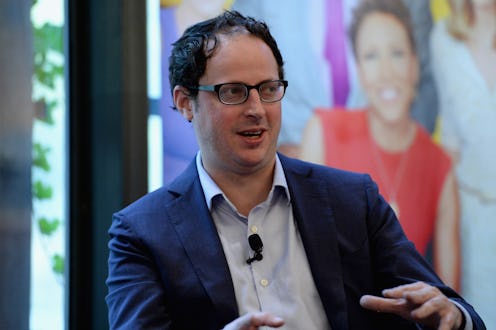News
Polls Are Not Crystal Balls, And That's On Us
What made Tuesday night extra hard to stomach for most liberals was that, according to what was supposedly the best statistical science out there, we were all geared to celebrate a Hillary Clinton victory. I bought two bottles of champagne — which, to the best of my knowledge, are still sitting in my friend Jess’ refrigerator. Now we know that the 2016 presidential poll analysts failed us — and pretty badly, in some cases. But what if our mistake was looking to them for predictions of the future in the first place?
In the era of forecasts and poll aggregators and Nate Silver’s heretofore pretty damn accurate predictions, putting our faith in the numbers felt nearly effortless. If I had a nickel for every doubter I placated with soothing tones fueled by FiveThirtyEight’s light-blue tint of North Carolina and Florida — not to mention the darker blue shades of Michigan, Wisconsin,c and Pennsylvania — I’d have at least a dollar or two.
That FiveThirtyEight was able to so accurately call previous elections — right up into the primaries — has lulled us into a false sense of security. But that’s our own fault. We don’t trust anyone else who claims to predict the future — not psychics, not astrologists, not really even meteorologists. So why did we put our faith in the polls? And what lesson can we learn for next time?
The first thing is that we don’t throw out the baby with the bathwater. Polls are useful tools for taking the temperature on this or that candidate or issue. But much like actual temperature-taking, it should be only one of many tools we bring to bear in trying to understand what’s happening. The polls going into election day were like a low fever — Clinton’s 3-4-point lead wasn’t great, but it wasn't awful — which we assume is a virus that will clear up on its own, but is actually appendicitis. Polls are only useful if they’re taken in concert with other measures which help us understand how the public is feeling (focus groups, anecdotal evidence, etc.). And many of us ignored or shielded ourselves from the evidence that the polls were only telling part of the story.
Next, though, we need to reevaluate how we interpret what the polls are telling us. I’ve never quite understood why we in modern American politics consider margins of less than 10 percentage points a landslide. Sure, compared to other elections (especially Tuesday’s), Barack Obama’s 7.2-point victory over John McCain feels enormous, but still, nearly 60 million people were ready to support a septuagenarian who chose Sarah Palin to be his backup.
All of which is to say that what the 2016 polls were telling us was that the race was close as f*ck, especially considering how odious one of the candidates was. And as Silver has pointed out, the 2016 national polls were more accurate than in 2012, which is mathematically correct, even if it’s emotionally messed up.
Whether 2016 spells the end of the data-driven Democratic campaign is unclear. (Though, to be replaced by what? Liberal versions of Steve Bannon and Kellyanne Conway?) However, what is clear is that we need to stop pretending polls are crystal balls. The future is shrouded in mystery, and pretending otherwise is hubris we can no longer afford.
